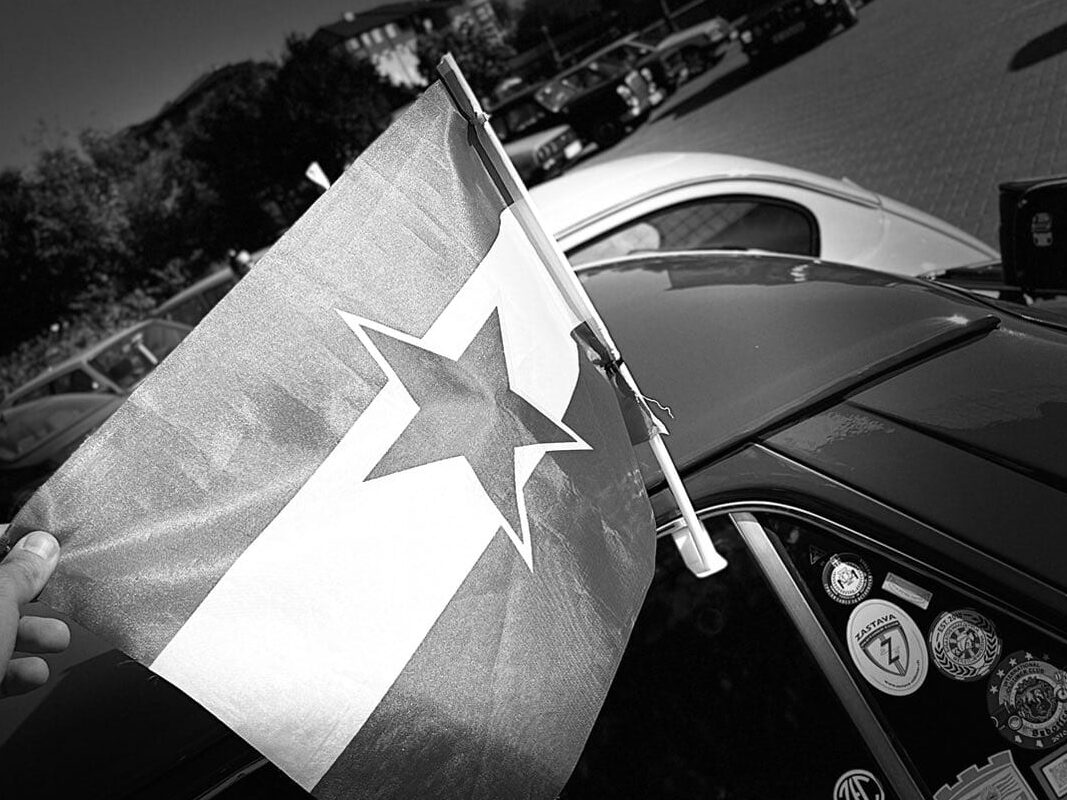
DISCOVER BELGRADE DIFFERENTLY WITH US
Take a vintage car with the driver and explore Belgrade differently. Belgrade is our treasure and we wish to make you discover it in a different way. Inspired by the time lived in Yugoslavia, we wanted to bring the spirit of a time closer to our guests.
Our vehicles are around 30 years old and each of them has its own story.
We start the tour in one of the old taverns from the Yugoslavian period, where we will drink coffee, rakija or juice and where the guide will tell us about the tour itself, the places we will visit and will try to take us back to a „better time“.
Of course we will make panoramic tour and take a photo with a retro camera for you to keep as a memory.

On the tour you will visit:
House of Flower – The Flower House is part of the Museum of the History of Yugoslavia and is one of the most visited tourist places in Belgrade. The building was built in 1975 as a winter garden for the needs of the then President of Yugoslavia, Josip Broz Tito, and was then called “The Flower Shop”. After Tito’s death on May 4, 1980, the winter garden was converted into his final resting place. Then the fountain was removed from the central part and a tomb was built, which looks like a large walled underground room. Considering the popularity of Josip Broz Tito at that time, it was considered inappropriate to call his final resting place a grave or a mausoleum, and thus the name House of Flowers was born. Today, the permanent exhibition in the House of Flowers consists of a memorial room with a book of mourning and an exhibition area where there are local, republican and federal batons that the youth of Yugoslavia carried on the occasion of Tito’s birthday on May 25, which is celebrated as Youth Day. The display includes written messages that Tito received with the batons, photos of the baton bearers as well as festivities on the occasion of Youth Day, marshal uniforms, etc.
SIV – The building was named the Palace of the Federation after its construction, but colloquially, even occasionally in official use, it was called SIV and SIV 1 (after the construction of buildings Siv 2 and Siv 3). After the dissolution of the SFRY, only the name of the Palace of the Federation was used, and after the secession of Montenegro in 2006, the building was unofficially named the Palace of Serbia/Palace of Serbia, but it was never officially renamed. The largest and most spectacular masterpiece of modernist architecture in Belgrade, and one of the first buildings to be constructed in the Novi Beograd district. The construction of the Federal Executive Council of Yugoslavia was started in 1947, just after the end of WWII, symbolizing the birth of a new socialist futurist nation with its own symbols and landmarks.
Hotel Jugoslavija – Hotel “Yugoslavija”, opened in 1969, was one of the first three important buildings planned in New Belgrade. When it was built, Hotel “Yugoslavia” was the largest and most modern hotel in the SFRJ, with seven floors and accompanying buildings. Hotel Jugoslavija – a symbol of a time, is one of the few buildings that has not been renovated and that has not received a new purpose or a new life. US Presidents Richard Nixon and Jimmy Carter, Queen Elizabeth II, German Chancellor Willy Brandt, astronauts Neil Armstrong and Buzz Aldrin and many others stayed in this hotel.
Genex Tower – The Genex Tower is one of the symbols of the development of the capital and the headquarters of the most successful Yugoslav company, as well as the meeting place of the business and political world of that time. Soliter was designed by architect Mihajlo Mitrović in 1980 in a brutalist style.
Starting time:
- At 10 AM
Meeting and ending place:
- Hotel or negotiated
The price includes:
- Retro car with driver
- Guide service per group
- Entrance tickets
- Complimentary water and traditional sweet in the car
- Small present „from Serbia with love“
- Photo with a retro camera to keep as a memory
The price not includes:
- Individual cost, lunch.